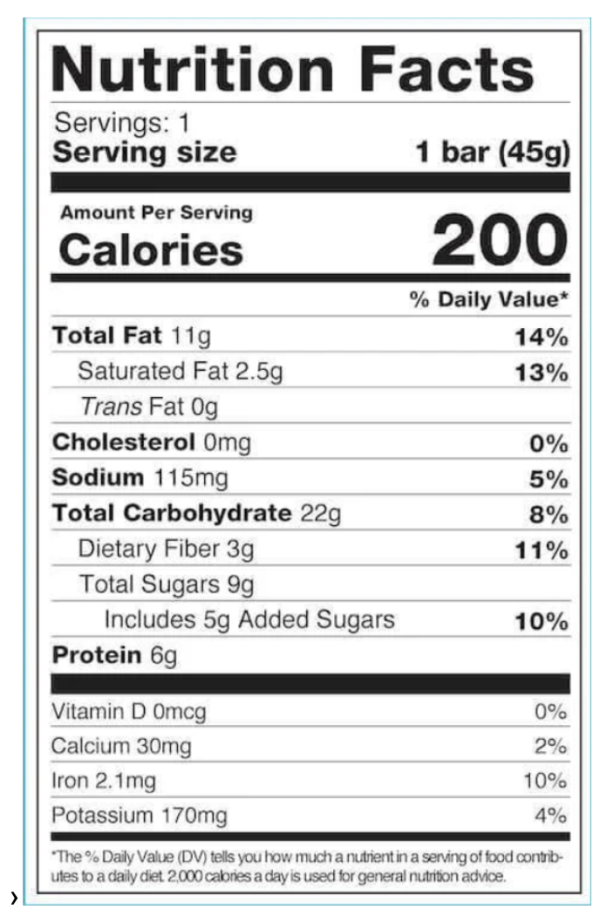
Clients are always asking me about which
protein powders, protein bars, sugar substitutes,
and ready-to-eat entrees are the healthiest.
And I get it!
It can be so overwhelming and confusing, especially when you are standing there in the grocery store with your cart deciding what to buy – when other people are in the aisle waiting for you to move!
That’s why I want to teach you how to easily read food labels and give you guidelines for any food you may buy:
#1 – No label is the best label.
Want to know the healthiest foods? Fruits and vegetables! They have no food label because they have just 1 ingredient. No need to wonder what’s in them. 🍎🥦🥕
#2 – Aim for 5 ingredients or less.
You want a very short list when you look at the ingredients. Less is more when it comes to food labels, so try to get items with no more than 5 ingredients on their label.
#3 – Look for ingredients you can pronounce and understand.
It means mostly avoiding ingredients you would not cook with at home.
Complicated ingredient names are chemicals, and your digestive system can’t identify those chemicals any better than your brain.
#4 – Avoid these ingredients.
If you see any of these on the label, it’s a red flag that you probably shouldn’t buy it:
- Sucralose (Splenda)
- Aspartame (Nutrasweet)
- Saccharine
- Erythritol
- Partially hydrogenated oils
- High fructose corn syrup
- GMO
- Carrageenan
- Nitrites/nitrates
- Benzoates
- Sulfites
- MSG
- Artificial flavors and colorings
#5 – Try to find less than 8g added sugar per serving.
Our bodies don’t need processed sugar to function properly. Added sugars contribute zero nutrients but add calories that can lead to extra pounds.
And, unfortunately added sugar is in so many foods that you wouldn’t expect (like pasta sauce and salad dressing).
#6 – Saturated fats should be below 5% of daily value.
Most saturated fats come from animal sources, including meat and dairy products, as well as tropical fats like coconut, palm and palm kernel.
Saturated fats can cause problems with your cholesterol levels, which can increase your risk of heart disease.
#7 – Look for at least 3g fiber per serving.
Most Americans get less than half the suggested amounts of daily fiber. Beyond reducing risk of chronic disease, eating a variety of whole foods that contain good sources of fiber can be an easy and enjoyable way to keep you fuller longer and help control your weight.
Want to know how to put all this together?
Look for a protein bar with:
- About 200 cals
- 8g added sugar or less
- At least 3g fiber
- At least 5g protein
Here’s a label from 88 Acres Dark Chocolate Sea Salt Seed & Oat Bars:
Other of my favorite brands that meet these criteria:
Rx bars
Epic
Luna
Kind (some flavors)
Health Warrior Chia
Health Warrior Pumpkin Seed
GoMacro protein bars
GoRaw Sprouted bars
I hope this helps you to navigate the grocery store a little easier next time!
I know it can be overwhelming but keep practicing and you’ll get to be a pro at reading food labels before you know it.
Need some personalized help around reading food labels?
Know that I am always here to support you and help you feel your best. Simply connect with me.
DISCLAIMER: This information is being provided to you for educational and informational purposes only. It is being provided to you to educate you about nutrition and as a self-help tool for your own use. It is not medical advice. This information is to be used at your own risk based on your own judgment. For my full Disclaimer, please click here.



